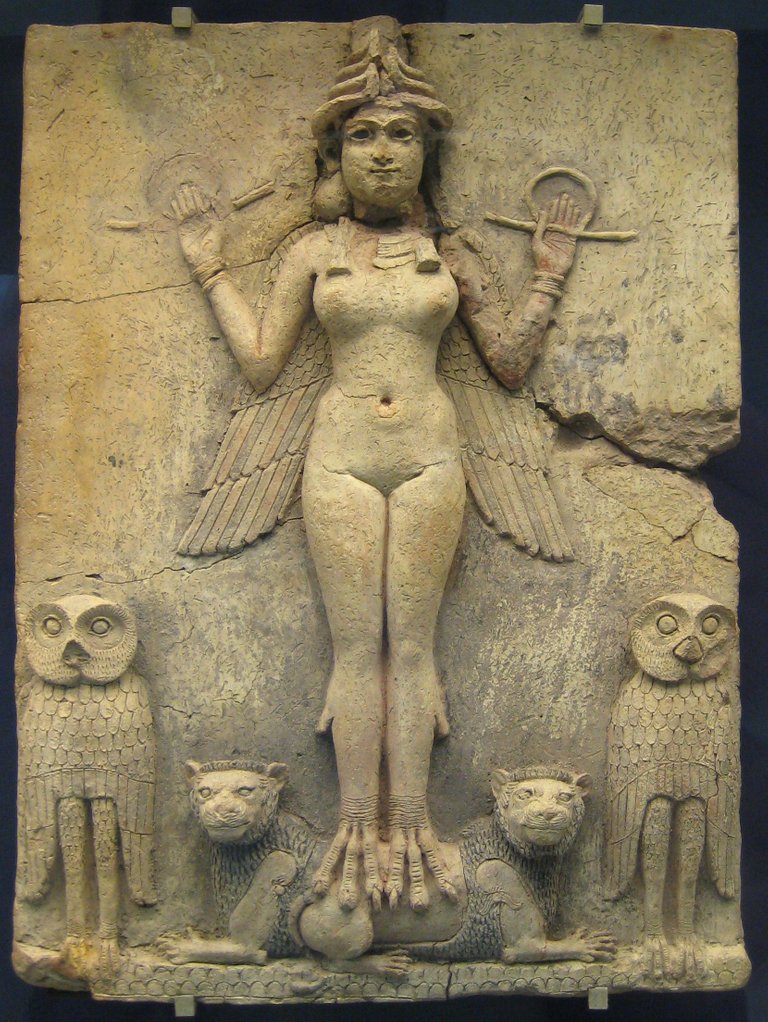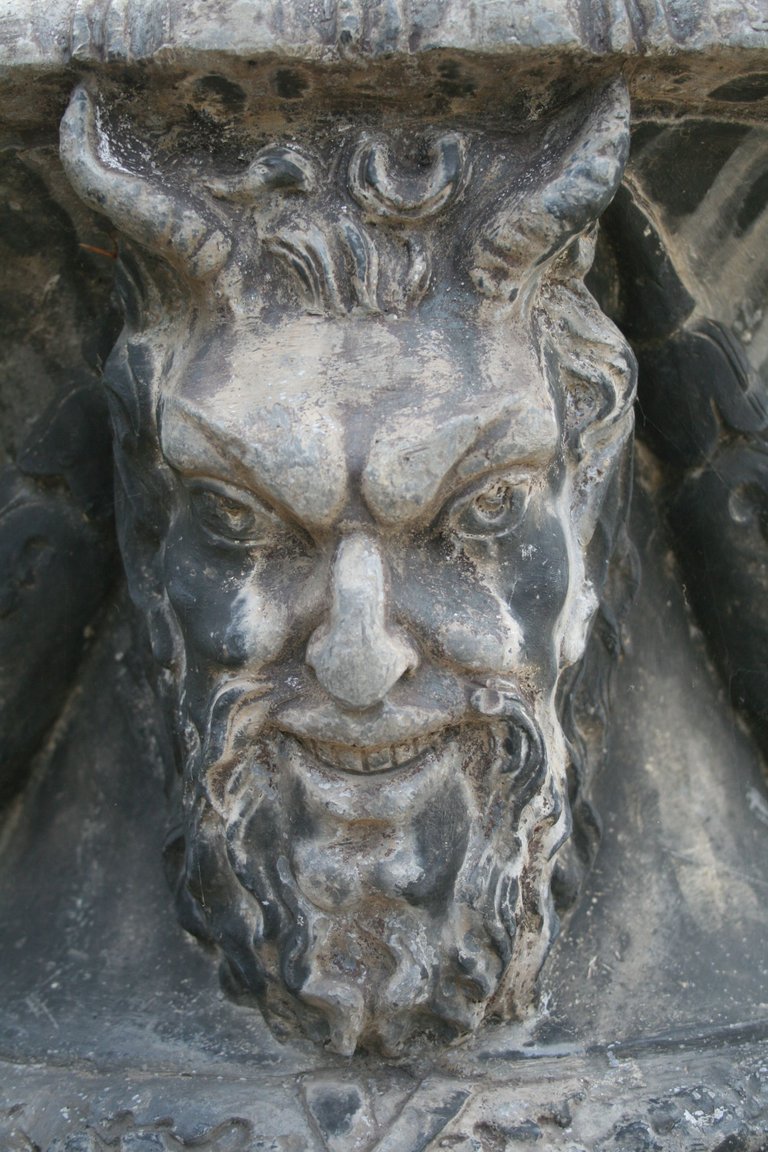
[Credits to Chris Clay (GU dev) for allowing me to use all the GU visual art available]
"When all the world dissolves, And every creature shall be purified, All places shall be hell that are not heaven" Christopher Marlowe, Doctor Faustus, II.i.120
Oh, Lord! Have we not desired to wipe our decks these last two weeks while facing Death decks. All those necroscepters, all the creatures coming from the voids to pursue and punish our mistakes, while its owner heals himself and plays the cards like Satan, but, Oh Almighty Queen of Nether! How much fun it is if I play with you!
This is the second episode of our GU mythology series, first of all, thank you for your appreciation for episode 1.
Today we will pick up from a tingling sound, our Malissus malicious laugh. The question that shall be answered: What is the history behind her?
Last time we mentioned how up until, approximately, 3000 B.C, the world was all about matriarchies, and how there were only goddesses, but now it is also essential to mention that all those deities originated from a single one. Earth goddess and death goddess were two faces of the same deity because life and death had the same importance, as both figures took importance on each half of the year, separated by the winter equinox which established the death and birth of one another. Life and death didn't just symbolize the people, but also the agricultural cycles of planting and harvesting.
Let's give an example, connecting our death decks with mythology. I present you to:
Ereshkigal: Mesopotamian Goddess of the Underworld
Holy Ereshkigal! Great is your renown!
Holy Ereshkigal! I sing your praises!
(The descent of Inanna)
Ereshkigal is the first goddess of the Underworld that humanity has recollection, and don't worry about pronunciation, I can't do it either! She was the sister of the main deity of the Summerian/Akkadian Pantheon, Inanna, and the image you have above, it is believed that represents both of them.
The main source of this Goddess of death is the epic poem "Descent of Inanna" dated somewhere around 2100-2000 B.C. That is a long, long time ago, and we can infer that oral knowledge about her can go as far as 3500 B.C.
As Malissus, Ereshkigal ruled the underworld, which in Sumerian times was known as Kur. She lived in a palace behind seven gates guarded by her gatekeeper Neti, and her task was not to punish those who died but to take care of them, it appears that Sumerian goddesses did not mess too much with people, but oh boy! They messed with each other.
When Inanna went down to the realm of the dead, to witness the funerary rites of Ereshkigal's lover, by order of her queen, Neti obliged Inanna to get naked, because any symbol from above didn't have importance in the Nether, that's why you'll see in the cards that most of the nether creatures have no clothes on them.
The tale continues, as follows, and I quote the text previously mentioned:
Naked and bowed low, Inanna entered the throne room.
Ereshkigal rose from her throne.
Inanna started toward the throne.
The Annuna, the judges of the underworld, surrounded her.
They passed judgment against her.
Then Ereshkigal fastened on Inanna the eye of death.
She spoke against her the word of wrath.
She uttered against her the cry of guilt.
She struck her.
Inanna was turned into a corpse,
A piece of rotting meat,
And was hung from a hook on the wall.
Here we can find other two connections between Malissus and Ereshkigal. In the first place, The eyes, chico, they never lie, watch Malissus eyes, those are the eyes of death, the same eyes Ereshkigal fastened on her sister, and that skull on Malissus's fingers is the power to turn anyone in a corpse, in a piece of rotting meat, as Inanna was turned. Of course, Malissus is still art, but it is derived from popular culture, and all cultures, originated in the myths.
Last but not least, we have Malissus's horns.
Horns are usually related to virility, and most horned figures are depicted as men because of Christian tradition. I'll quote from the Book of Revelations, chapter 13:
"The Beast out of the Earth
11 Then I saw a second beast, coming out of the earth. It had two horns like a lamb, but it spoke like a dragon. 12 It exercised all the authority of the first beast on its behalf, and made the earth and its inhabitants worship the first beast, whose fatal wound had been healed."
Do you remember that the original Goddesses had two faces? Earth and Death at the same time? Well, the Christian depiction of the devil is based on the Beast out of the earth, and that beast of the earth acts on behalf of the first beast, in the bible, it is said that it is a water creature, similar to a hydra. Well, ladies and gentlemen, both beasts refer to women deities. Christian tradition is patriarchal because it is much newer than most other traditions. The water beast reminds us of many mythologies, for example, the Finnish, where the world was originated by a woman deity who dives into the water and gets pregnant by it, while the beast earth refers to deities such as Ereshkigal.
That is to say, that all traditions are built upon one another, and they necessarily have to differentiate from past tales, as Malisssus has her own identity based on previous goddesses of death.
That is all for today, I hope you enjoy the history and the stories, and I'll be here next week for another episode.
Have a great grind!


Congratulations @occultis! You have completed the following achievement on the Hive blockchain and have been rewarded with new badge(s):
Your next target is to reach 400 upvotes.
You can view your badges on your board and compare yourself to others in the Ranking
If you no longer want to receive notifications, reply to this comment with the word
STOPSupport the HiveBuzz project. Vote for our proposal!